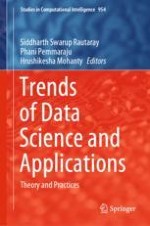2021 | OriginalPaper | Chapter
Evolution of Sentiment Analysis: Methodologies and Paradigms
Author : Aseer Ahmad Ansari
Published in: Trends of Data Science and Applications
Publisher: Springer Singapore
Activate our intelligent search to find suitable subject content or patents.
Select sections of text to find matching patents with Artificial Intelligence. powered by
Select sections of text to find additional relevant content using AI-assisted search. powered by
